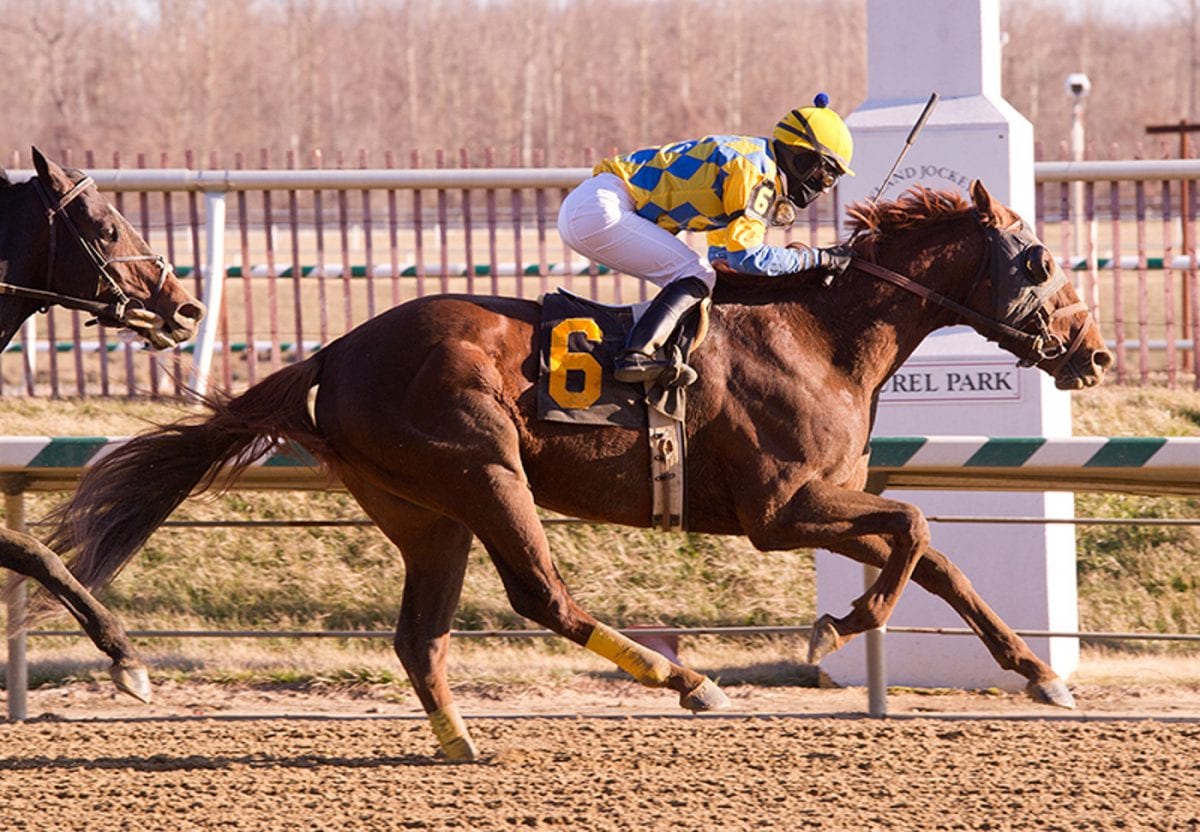Two Saturdays ago, Penn National handled a shade over $620,000 — almost exactly one-sixth of what the track handled this past Saturday for the Penn Mile, when more than $3.6 million went through the wagering windows.
That speaks to the power of a good idea well executed — and also points to the challenges that Penn, and racing in general, still face.
As Teresa Genaro wrote (here) prior to the Penn Mile, the concept behind the Penn Mile was similar to that employed by the track’s corporate stablemate, Charles Town, when the latter created the Charles Town Classic: find an underserved category of racing, schedule the race in a blank space on the racing calendar, and commit major resources to it.
In the case of the Penn Mile, that’s turfing sophomores; the middle of the Triple Crown chase; and $500,000 in purse money, plus solid supporting races, and a significant marketing effort. It’s a simple, sensible strategy, and one that had worked before.
Not that that all guaranteed a successful evening. In fact, Penn’s Director of Racing Operations Dan Silver told me that, because the track typically handles more wagering in the winter than the spring and summer, “The potential was there to have a disappointing day.”
So perhaps it was with both pleasure and relief that Silver was able to report that the evening — which shattered all of Penn’s existing handle records — “surpassed our expectations. Everything really came together. The fact that we had one of the best cards in the country on Saturday really helped, and it reinforced our belief” that big events are the key to building brand recognition and, thus, handle.
Yet as successful as events like these are, they also lay bare the challenges facing the sport, the most important of which is this: can it obtain — and keep — new fans and bettors?
Nationally, wagering in 2012 was only about 70 percent of what it had been a decade earlier — adjusting for inflation, it’s less than 60 percent. And even though wagering was up on a year-over-year basis in 2012 versus 2011, that increase still didn’t keep pace with inflation.
What’s more, even some of the really successful endeavors — like the Charles Town Classic — seem more to appeal to hard-core fans and bettors than to mint new ones. Since inaugurating that race in 2009, Charles Town has seen its annual “export handle” — the amount wagered on Charles Town’s races at places other than Charles Town — rise by 38 percent.
But its on-track and import handles — the amount wagered each year by players at Charles Town on Charles Town races and on races run at other tracks, respectively — have declined by about 12 percent in the same period, according to West Virginia Racing Commission data. Even as Charles Town successfully courts the simulcast player, it’s having a harder time attracting the local gambler.
Some of this, of course, is the result of technological innovation. Many gamblers, predictably, stay home and play using advance deposit wagering accounts rather than schlep out to the local track.
But the national decline in wagering isn’t about technology; it’s about racing’s loosening hold on the public mind.
Big events are one way of combating that trend. Penn deployed significant marketing resources, both nationally — for the simulcast players — and locally, “to let the local folks know we were doing something special and they might want to come out and be part of it,” Silver explained. “I had people who had been coming to Penn since the 1970s,” he added, “who told me that it was the biggest crowd they’d ever seen there.”
A different kind of event that brought a sizable crowd to the track — many for the first time — was Pimlico’s Decanter Wine Festival in April. The festival packed the second floor grandstand at Old Hilltop, and many of the participants drifted into wagering and cheering for their horses.
Aligning racing with the “good guys” is another way to combat the negative trends. Penn tried to do that by using the event to promote charities that care for horses after their racing careers are over. “Doing things like that,” Silver noted, “I think it heightened awareness of the event.”
For a sport that has sustained its share of black eyes in recent years — some deserved, some not so — that makes good sense.
But turning once-a-year visitors into occasional visitors — or occasional visitors into real players — remains an elusive goal. Silver noted that his track had “no specific program” targeted at track newcomers on Penn Mile day; a person offering handicapping tips and advice during Decanter mostly was lonely.
“My problem,” a regional racetrack executive once lamented to me following a successful event at his track, “is that all these people shake my hand on the way out and say, ‘That was great! We’ll be back next year.’ I need them to come out next week and next month, not just next year.”
Of course, that’s racing’s — and not just his — problem. For example, there will be 50,000 or so fans at Belmont Park tomorrow for the Belmont Stakes and, had Orb won the Preakness, the number would likely have been double that; yet on the prior Saturday, just 6,500 rattled around the massive plant.
Empty grandstands don’t necessarily bespeak a problem today, because the simulcast trade can make up for them.
But they do portend a problem for tomorrow. The next generation of bettors has to come from somewhere– and that somewhere is much more likely to be a visit to the racetrack itself than it is watching the typically under-produced simulcast fare that’s standard in the industry.
The statistics tell us that in recent years about twice as many fans either moved away from the sport or died as came to the sport. That’s a recipe for exactly what we currently see: decline.
Racetracks are beginning to think more innovatively about how to bring people to the races, and that’s a good start.
Now for the next step: getting them to come back of their own accord.







